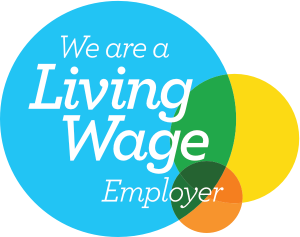The first Charity Health Check has shown most charities are facing significant deterioration in their financial health while they fight to protect delivery of front-line services.
ACEVO, the membership body for charity chief executives, and researchers at Centre for Mental Health asked 174 charities across England and Wales about changes seen in April across five key markers of financial health. These five areas were:
- New business and donation income
- Cashflow
- Number of employees (FTE)
- Reserves
- Spending on front line service delivery
The result is a worrying set of results for the charity sector with the majority seeing reserves, cash-flow, donations and new business income falling in the last month. Meanwhile employment and front-line services have held firm and will be key indicators of the impact of Covid-19 in next month’s (June) figures.
The Charity Health Check (CHC) is a composite score that measures the financial health of the charity sector each month. A score above 50 means an improvement. A score below 50 is a deterioration. 50 means no change.
The score for May was 30.8 out of a maximum 100.This low score shows charities had an extremely bad April and face an enormous financial squeeze. This is worse than April’s Manufacturing PMI (a parallel measure) that is at a record low of 32.5.
Vicky Browning, chief executive at ACEVO said: “As we navigate the worst impacts of the outbreak, charities and the essential support they provide is never more needed. I have spoken to members doing whatever they can to continue to provide services while income has fallen off the edge of a cliff. The Charity Health Check findings echo this. Charities are experiencing a reduction in cashflow and reserves while maintaining or increasing frontline services. This is not sustainable long-term and demonstrates why further government support is urgently needed if we are to build back better.
Nick O’Shea, chief economist at Centre for Mental Health said: “The Charity Health Check paints a worrying picture of the sector’s position at this time, and its prospects in the near future. Our analysis of the results suggests that charities across the country are continuing to deliver much-needed help to people during the crisis while facing an uncertain future with diminishing resources. From an economic standpoint, this is unsustainable. A rapid financial response is needed to prevent vital support disappearing from people’s lives when they need it the most.
- Data was collected between 29 April and 4 May 2020.
- All respondents were members of ACEVO and are registered charities operating and/or headquartered in England or Wales.
- 174 respondents, of which 147 provide front-line services.
- Breakdown of respondents by income bracket:
| Under 100k | 1.15% |
| 100k – 500k | 25.29% |
| 500k – 1m | 17.24% |
| 1m – 5m | 31.03% |
| 5m – 10m | 16.09% |
| 10m – 20m | 5.17% |
| 20m + | 4.02% |
- Analysis conducted by Nick O’Shea, chief economist at the Centre for Mental Health.
- For further information from ACEVO and Vicky Browning please contact Krisiana Wrixon on 07894 668508.
- For further information from Nick O’Shea and the Centre for Mental Health please contact Andy Bell on 07810 503638.
Specific results are:
New business and donations are worse for 70% of charities surveyed
| New business and donations | |
| Better | 9% |
| The same | 22% |
| Worse | 70% |
| Grand Total | 100% |
Cashflow – a key measure of organisational health which allows bills and wages to be paid – has worsened for 59% in the last month
| Cashflow | |
| Better | 10% |
| The same | 31% |
| Worse | 59% |
| Grand Total | 100% |
The number full time equivalent staff has remained relatively steady thanks in part to furloughing arrangements, although the numbers volunteering has fallen for a third of charities
| Full time staff | |
| Better | 5% |
| The same | 76% |
| Worse | 19% |
| Grand Total | 100% |
Reserves have worsened for 61% of charities, with just 4% posting an improvement
| Your charity’s reserves | |
| Better | 4% |
| The same | 34% |
| Worse | 61% |
| Grand Total | 100% |
Spending on front-line services has remained steady, with 70% of organisations either improving or sustaining expenditure despite the falls in cash, reserves, donations and grants.
| Spending on front line services (n=147) | |
| Better | 20% |
| The same | 50% |
| Worse | 30% |
| Grand Total | 100% |
The Charity Health Check score asks five short questions requiring short answers – better, worse, the same. The CHC score averages those scores and is calculated as:
CHC Score =
(percentage of questions that reported an improvement) + (1/2 x percentage of answers that reported no change)
So, if 100% of the questions were answered with an improvement, the score would be 100. If 100% of the questions were answered with no change, the score would be 50.
This means that a score above 50 is good. A score below 50 is a deterioration. 50 means no change.


